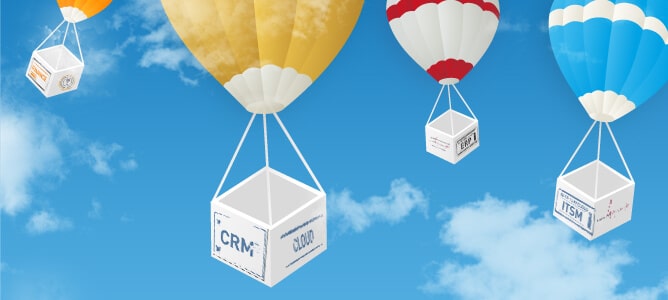Top 4 Considerations When Moving to the Cloud

Since it burst impressively onto the scene in the late 1990s, when Salesforce.com introduced the concept of delivering enterprise applications via a simple website, the buzz surrounding cloud computing has showed no signs of slowing down.
Conversely, this technology trend has just begun to make its mark. In 2013 alone, researchers predicted that the cloud market will burgeon to $160 billion.
The cloud has been celebrated for the many benefits it affords businesses—both large and small—such as lowered capital expenditures, simplified maintenance and upgrade processes, increased flexibility, mobility and scalability, business continuity and, with a competent SaaS provider, even improved IT security.
While the cloud has many uses, its capabilities have found a strong footholding in the IT service management sector. This is because 91 percent of IT decision makers have a positive opinion toward cloud computing, according to a national survey.
As an IT professional, you’re constantly on the lookout for tools that will help you perform better and more efficiently, which makes it difficult to resist the cloud. But before you jump head first, there are considerations you must first bear in mind.
Security
Data security in the cloud has been a point of contention for some time. According to a recent Alsbridge survey of 250 IT decision makers, 45 percent of respondents were concerned about the release of sensitive data as a result of a major security breach. However, despite participants concerns, only 10 percent believe that the cloud has yet to prove its worth and just four percent still feel the cloud is just hype.
Before committing to the cloud, you should ensure that your cloud provider can meet your security and compliance standards. Does your provider use data encryption? Are they SSAE-16 certified? These are questions you may want to ask before handing your sensitive data over.
Vendor Lock-In
According to a survey of IT decision makers, 39 percent of respondents said they feel “locked-in” with their existing suppliers. Don’t get into a hostage situation with your cloud vendor. Make sure your vendor provides you with an open platform that supports all different types of solutions.
Your business needs are sure to scale, and so too should your solution.
Performance
With your servers just a few feet away, you’re accustomed to speedy application performance. However, the cloud can feel light-years away and performance issues may come up.
Based on your requirements – whether its bandwidth, latency, or scalability – make sure your existing applications are good candidates for being migrated to the cloud. For example, an application with high bandwidth needs may not be a good candidate.
Public, Private, or Hybrid
Depending on the type of data you wish to move, you will want to consider which type of cloud structure is best for you and your needs. For example, the public cloud, which is network-based services stored in datacenters outside your organization, offers a high level of efficiency in shared resources, but can be more vulnerable to security issues.
The private cloud, which is network-based services stored behind a company’s own firewall (inside your organization), offers a greater level of security, but is oftentimes costly.
A hybrid structure, on the other hand, combines the best of both worlds, where the company provides and manages some resources in-house, but has others stored and managed externally. A hybrid approach allows businesses to take advantage of the scalability and cost-effectiveness of a public cloud structure and the security provided by a private cloud structure.
With more than half of businesses in the United States now using cloud computing for IT purposes, such as IT service management, it’s time to consider whether or not the technology is right for you.
To learn more about IT service management in the cloud, click here.
Please share your thoughts in the comments or on Twitter, Google+, or Facebook where we are always listening.
Did you find this interesting?Share it with others:
Did you find this interesting? Share it with others:







